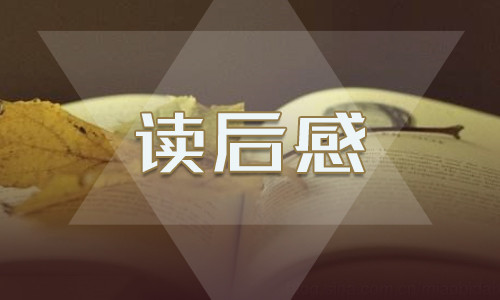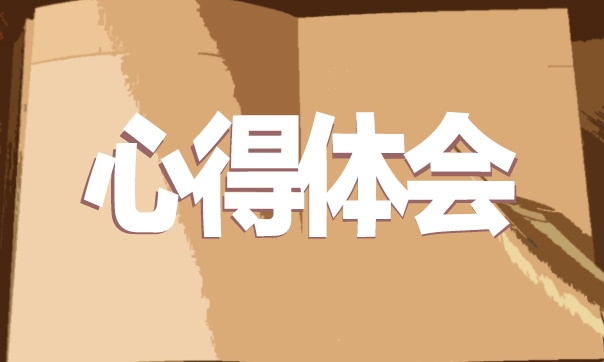Specialty TreatmentsRoger M. RowellContents
Plasticizing Wood 19–1
Principles of Plasticizing and Bending 19–1Bent Wood Members 19–2Laminated Members 19–2
Veneered Curved Members 19–3Selection of Stock 19–3
Bending of Solid Members 19–3Moisture Content of Bending Stock 19–3Bending Operation and Apparatus 19–4Fixing the Bend 19–4Modified Woods 19–4
Characteristics of Bent Wood 19–4Resin-Treated Wood (Impreg) 19–5
Resin-Treated Compressed Wood (Compreg) 19–5Untreated Compressed Wood (Staypak) 19–9Untreated Heated Wood (Staybwood) 19–10Wood–Polymer Composites 19–10Wood Treated With Polyethylene Glycol (PEG) 19–10
Paper-Based Plastic Laminates 19–12Chemical Modification 19–11
Industrial Laminates 19–12Decorative Laminates 19–12Paper-Face Overlays 19–13Lignin-Filled Laminates 19–13References 19–14
Chapter 19any specialty treatments can be applied to wood toeither improve its performance or change its
those that make permanent changes in the shape of a woodproperties. Treatments addressed in this chapter are
product, improvements in dimensional stability, or im-provements in performance through combinations withnonwood resources.
Plasticizing Wood
In simple terms, the wood cell wall is a composite made of aPrinciples of Plasticizing and Bending
rigid cellulose polymer in a matrix of lignin and the hemicel-luloses. The lignin polymer in the middle lamella and S2layer is thermoplastic; that is, it softens upon heating. Theglass transition temperature approximately 170possible to cause the lignin to undergo thermoplastic flow°C (338°F). Above the matrix Tg of the lignin in the matrix isTg, it isand, upon cooling, reset in the same or modified configura-tion. This is the principal behind bending of wood.
The matrix can be thermoplasticized by heat alone, but theTcomposition can occur if high temperatures are maintained forg of the unmodified matrix is so high that some fiber de-a lengthy period. The the addition of moisture or through the use of plasticizersTg of the matrix can be decreased withor softeners.
Heat and moisture make certain species of wood sufficientlyplastic for bending operations. Steaming at atmospheric or alow gage pressure, soaking in boiling or nearly boilingwater, or microwave heating moist wood are satisfactorymethods of plasticizing wood. Wood at 20% to 25% mois-ture content needs to be heated without losing moisture; at alower moisture content, heat and moisture must be added.As a consequence, the recommended plasticizing processesare steaming or boiling for about 15 min/cm (38 min/in) ofthickness for wood at 20% to 25% moisture content andsteaming or boiling for about 30 min/cm (75 min/in) ofthickness for wood at lower moisture content levels.
Steaming at high pressures causes wood to become plastic,but wood treated with high pressure steam generally doesnot bend as successfully as does wood treated at atmosphericor low pressure. Microwave heating requires much shortertimes.
19–1
Wood can be plasticized by a variety of chemicals. Commonchemicals that plasticize wood include water, urea, dimethy-lol urea, low molecular weight phenol-formaldehyde resin,dimethyl sulfoxide, and liquid ammonia. Urea and dimethy-lol urea have received limited commercial attention, and abending process using liquid ammonia has been patented.Wood members can be readily molded or shaped after im-mersion in liquid ammonia or treatment under pressure withammonia in the gas phase. As the ammonia evaporates, thelignin resets, the wood stiffens and retains its new shape.Plasticization of the matrix alone can be done using chemicalmodification technologies, which are covered later in thischapter.
It is also possible to bend wood without softening or plasti-cizing treatments. However, the stability of the final productmay not be as permanent as from treatments in which soften-ing and plasticizing methods are used.
Bent Wood Members
Bending can provide a variety of functional and estheticallypleasing wood members, ranging from large curved arches tosmall furniture components. The curvature of the bend, sizeof the member, and intended use of the product determine theproduction method.
Laminated Members
At one time in the United States, curved pieces of wood werelaminated chiefly to produce small items such as parts forfurniture and pianos. However, the principle was extended tothe manufacture of arches for roof supports in farm, industrial,and public buildings and other types of structural members(see Ch. 11). The laminations are bent without end pressureagainst a form and adhesively bonded together. Both soft-woods and hardwoods are suitable for laminated bent struc-tural members, and thin material of any species can be bentsatisfactorily for such purposes. The choice of species andadhesive depends primarily on the cost, required strength,and demands of the application.
Laminated curved members are produced from dry stock in asingle bending and adhesive bond formation operation. Thisprocess has the following advantages compared with bendingsingle-piece members:
? Bending thin laminations to the required radius involvesonly moderate stress and deformation of the wood fibers,eliminating the need for treatment with steam or hot waterand associated drying and conditioning of the finishedproduct. In addition, the moderate stresses involved incurving laminated members result in stronger memberswhen compared with curved single-piece members.? The tendency of laminated members to change shape withchanges in moisture content is less than that of single-piece bent members.? Ratios of thickness of member to radius of curvature thatare impossible to obtain by bending single pieces can beattained readily by laminating. 19–2
? Curved members of any desired length can be produced.Design criteria for glued-laminated timber are discussed inChapter 11. Straight-laminated members can be steamed andbent after they are bonded together. However, this type ofprocedure requires an adhesive that will not be affected by thesteaming or boiling treatment and complicates conditioningof the finished product.
Curved Plywood
Curved plywood is produced either by bending and adhesivebonding the plies in one operation or by bending previouslybonded flat plywood. Plywood curved by bending andbonding simultaneously is more stable in curvature thanplywood curved by bending previously bonded material.Plywood Bent and AdhesivelyBonded Simultaneously
In bending and bonding plywood in a single operation,adhesive-coated pieces of veneer are assembled and pressedover or between curved forms. Pressure and sometimes heatare applied through steam or electrically heated forms untilthe adhesive sets and holds the assembly to the desired
curvature. Some laminations are at an angle, usually 90other laminations, as in the manufacture of flat plywood. The°, tograin direction of the thicker laminations is normally parallelto the axis of the bend to facilitate bending.
A high degree of compound curvature can be obtained in anassembly comprising a considerable number of thin veneers.First, for both the face and back of the assembly, the twoouter plies are bonded at 90The remaining veneers are then adhesive-coated and° to each other in a flat press.assembled at any desired angle to each other. The entireassembly is hot-pressed to the desired curvature.
Bonding the two outer plies before molding allows a higherdegree of compound curvature without cracking the face pliesthan could otherwise be obtained. Where a high degree ofcompound curvature is required, the veneer should be rela-tively thin (under 3 mm (1/8 in.)) with a moisture content ofabout 12%.
The molding of plywood with fluid pressure applied byflexible bags of some impermeable material produces ply-wood parts of various degrees of compound curvature. In“bag molding,” fluid pressure is applied through a rubberbag by air, steam, or water. The veneer is wrapped around aform, and the whole assembly is enclosed in a bag and sub-jected to pressure in an autoclave, the pressure in the bagbeing “bled.” Or, the veneer may be inserted inside a metalform and, after the ends have been attached and sealed, pres-sure is applied by inflating a rubber bag. The form may beheated electrically or by steam.
The advantages of bending and bonding plywood simultane-ously to form a curved shape are similar to those for curved-laminated members. In addition, the cross plies give thecurved members properties that are characteristic of cross-banded plywood. Curved plywood shells for furniture
manufacture are examples of these bent veneer and adhesive-bonded products.
Plywood Bent After Bonding
After the plies are bonded together, flat plywood is often bentby methods that are somewhat similar to those used in
bending solid wood. To bend plywood properly to shape, itmust be plasticized by some means, usually moisture orheat, or a combination of both. The amount of curvature thatcan be introduced into a flat piece of plywood depends onnumerous variables, such as moisture content, direction ofgrain, thickness and number of plies, species and quality ofveneer, and the technique applied in producing the bend.Plywood is normally bent over a form or a bending mandrel.Flat plywood bonded with a waterproof adhesive can be bentto compound curvatures after bonding. However, no simplecriterion is available for predetermining whether a specificcompound curvature can be imparted to flat plywood. Soak-ing the plywood prior to bending and using heat duringforming are aids in manipulation. Usually, the plywood tobe postformed is first thoroughly soaked in hot water, thendried between heated forming dies attached to a hydraulicpress. If the use of postforming for bending flat plywood tocompound curvatures is contemplated, exploratory trials todetermine the practicability and the best procedure are rec-ommended. Remember that in postforming plywood tocompound curvatures, all the deformation must be by com-pression or shear because plywood cannot be stretched.Hardwood species, such as birch, poplar, and gum, areusually used in plywood that is to be postformed.
Veneered Curved Members
Veneered curved members are usually produced by bondingveneer to one or both faces of a curved solid-wood base. Thebases are ordinarily sawn to the desired shape or bent from apiece grooved with saw kerfs on the concave side at rightangles to the direction of bend. Pieces bent by making sawkerfs on the concave side are commonly reinforced and keptto the required curvature by bonding splines, veneer, or otherpieces to the curved base. Veneering over curved solid woodis used mainly in furniture. The grain of the veneer is com-monly laid in the same general direction as the grain of thecurved wood base. The use of crossband veneers, that is,veneers laid with the grain at right angles to the grain of theback and face veneer, reduces the tendency of the memberto split.
Bending of Solid Members
Wood of certain species that is steamed, microwaved, orsoaked in boiling water can be compressed as much as 25%to 30% parallel to the grain. The same wood can be stretchedonly 1% to 2%. Because of the relation between attainabletensile and compressive deformations, if bending involvessevere deformation, then most of the deformation must becompression. The inner or concave side must assume the
maximum amount of compression, and the outer or convexside must experience zero strain or a slight tension. Toaccomplish this, a metal strap equipped with end fittings iscustomarily used. The strap makes contact with the outer orconvex side and, acting through the end fittings, places thewhole piece of wood in compression. The tensile stress thatwould normally develop in the outer side of the piece ofwood during bending is borne by the metal strap. A bendingform is shown in Figure 19–1.
Selection of Stock
In general, hardwoods possess better bending quality thansoftwoods, and certain hardwoods surpass others in thisquality. This is interesting from a theoretical point of viewbecause hardwoods contain less lignin than softwoods.Hardwoods also contain much more hemicelluloses in thematrix than do softwoods. The species commonly used toproduce bent members are white oak, red oak, elm, hickory,ash, beech, birch, maple, walnut, sweetgum, and mahogany.As stated, most softwoods have a poor bending quality andare not often used in bending operations. However, Pacificyew and yellow-cedar are exceptions to this rule. In addition,Douglas-fir, southern yellow pine, northern and Atlantic
white-cedar, and redwood are used for ship and boat plankingfor which purpose they are often bent to moderate curvatureafter being steamed or soaked.
Bending stock should be free from serious cross grain anddistorted grain, such as may occur near knots. The slope ofcross grain should not be steeper than about 1 to 15. Decay,knots, shake, pith, surface checks, and exceptionally light orbrashy wood should be avoided.
Moisture Content of Bending Stock
Although green wood can be bent to produce many curvedmembers, difficulties are encountered in drying and fixing thebend. Another disadvantage with green stock is that hydro-static pressure may be developed during bending. Hydro-static pressure can cause compression failures on the concaveside if the wood is compressed by an amount greater than theair space in the cells of the green wood. Bending stock thathas been dried to a low moisture content level requires alengthy steaming or soaking process to increase its moisturecontent to the point where it can be made sufficiently plasticfor successful bending. For most chair and furniture parts, themoisture content of the bending stock should be 12% to 20?fore it is steamed or microwave heated. The preferredmoisture content level varies with the severity of the curva-ture to which the wood is bent and the method used in
drying and fixing the bent member. For example, chair-backslats, which have a slight curvature and are subjected tosevere drying conditions between steam-heated platens, canbe produced successfully from stock at 12% moisture con-tent. For furniture parts that need a more severe bend wherethe part must be bent over a form, 15% to 20% moisturecontent is recommended.
19–3
Figure 19–1. Chair back being bent through an arc of 180° in a bending machine.
Bending Operation and Apparatus
After being plasticized, the stock should be quickly placed inthe bending apparatus and bent to shape. The bending appa-ratus consists essentially of a form (or forms) and a means offorcing the piece of steamed wood against the form. If thecurvature to be obtained demands a difference of much morethan 3% between lengths of the outer and inner surfaces of thepieces, then the apparatus should include a device for apply-ing end pressure. This generally takes the form of a metalstrap or pan provided with end blocks, end bars, or clamps.
Characteristics of Bent Wood
After a bent piece of wood is cooled and dried, the curvaturewill be maintained. An increase in moisture content maycause the piece to lose some of its curvature. A decrease inmoisture content may cause the curve to become sharper,although repeated changes in moisture content bring about agradual straightening. These changes are caused primarily bylengthwise swelling or shrinking of the inner (concave) face,the fibers of which were wrinkled or folded during thebending operation.
A bent piece of wood has less strength than a similar unbentpiece. However, the reduction in strength brought about bybending is seldom serious enough to affect the utility valueof the member.
Fixing the Bend
After being bent, the piece should be cooled and dried whileheld in its curved shape. One method is to dry the piece inthe bending machine between the plates of a hot-plate press.Another method is to secure the bent piece to the form andplace both the piece and the form in a drying room. Stillanother is to keep the bent piece in a minor strap with tierods or stays so that it can be removed from the form andplaced in a drying room. When the bent member has cooledand dried to a moisture content suitable for its intended use,the restraining devices can be removed and the piece willhold its curved shape. 19–4
Modified Woods
Wood can be chemically modified to improve water repel-lency, dimensional stability, resistance to acids or bases,ultraviolet radiation, biodeterioration, and thermal degrada-tion. Wood can also be chemically treated, then compressedto improve dimensional stability and increase hardness.
Sheets of paper treated with resins or polymers can be lami-nated and hot pressed into thick panels that have the appear-ance of plastic rather than paper. These sheets are used inspecial applications because of their structural properties andin items requiring hard, impervious, and decorative surfaces.
Modified woods, modified wood-based materials, and paper-based laminates are usually more expensive than wood be-cause of the cost of the chemicals and the special processingrequired to produce them. Thus, modified wood use is gen-erally limited to special applications where the increased costis justified by the special properties needed.
Wood is treated with chemicals to increase hardness andother mechanical properties, as well as its resistance to de-cay, fire, weathering, and moisture. The rate and extent ofswelling and shrinking of the wood when in contact withwater is reduced by application of water-resistant chemicalsto the surface of wood, impregnation of the wood with suchchemicals dissolved in water or volatile solvents, or bondingchemicals to the cell wall polymer. Such treatments mayalso reduce the rate at which wood changes dimension as aresult of humidity, even though these treatments do not affectthe final dimensional changes caused by lengthy durationexposures. Paints, varnishes, lacquers, wood-penetratingwater repellents, and plastic and metallic films retard the rateof moisture absorption but have little effect on total dimen-sional change if exposure to moisture is extensive andprolonged.
Resin-Treated Wood (Impreg)
Permanent stabilization of the dimensions of wood is neededfor certain specialty uses. This can be accomplished bydepositing a bulking agent within the swollen structure ofthe wood fibers. The most successful bulking agents thathave been commercially applied are highly water-soluble,thermosetting, phenol-formaldehyde resin-forming systems,with initially low molecular weights. No thermoplasticresins have been found that effectively stabilize thedimensions of wood.
Wood treated with a thermosetting, fiber-penetrating resinand cured without compression is known as impreg. Thewood (preferably green veneer to facilitate resin pickup) issoaked in the aqueous resin-forming solution or, if air dry, isimpregnated with the solution under pressure until the resincontent equals 25% to 35% of the weight of dry wood. Thetreated wood is allowed to stand under nondrying conditionsfor 1 to 2 days to permit uniform distribution of the solutionthroughout the wood. The resin-containing wood is dried atmoderate temperatures to remove the water, then heated tohigher temperatures to cure the resin.
Uniform distribution of the resin has been effectively accom-plished with thick wood specimens only in sapwood ofreadily penetrated species. Although thicker material can betreated, the process is usually applied to veneers up to about8 mm (0.3 in.) thick, because treating time increases rapidlywith increases in thickness. Drying thick, resin-treated woodmay result in checking and honeycombing. For these
reasons, treatments should be confined to veneer and thetreated-cured veneer used to build the desired products. Anyspecies can be used for the veneer except the resinous pines.The stronger the original wood, the stronger the end product.Impreg has a number of properties differing from those ofnormal wood and ordinary plywood. These properties aregiven in Table 19–1, with similar generalized findings forother modified woods. Data for the strength properties ofyellow birch impreg are given in Table 19–2. Information onthermal expansion properties of ovendry impreg is given inTable 19–3.
The good dimensional stability of impreg is the basis of oneuse where its cost is not a deterrent. Wood dies of automo-bile body parts serve as the master from which the metal-forming dies are made for actual manufacture of parts. Smallchanges in moisture content, even with the most dimension-ally stable wood, produce changes in dimension and curva-ture of an unmodified wood die. Such changes create majorproblems in making the metal-forming dies where close finaltolerances are required. The substitution of impreg, with itshigh antishrink efficiency (ASE) (Table 19–4), almost en-tirely eliminated the problem of dimensional change duringthe entire period that the wood master dies were needed.Despite the tendency of the resins to dull cutting tools,pattern makers accepted the impreg readily because it ma-chines with less splitting than unmodified wood.Patterns made from impreg are also superior to unmodifiedwood in resisting heat when used with shell-molding tech-niques where temperatures as high as 205required to cure the resin in the molding sand.
°C (400°F) areResin-Treated Compressed Wood(Compreg)
Compreg is similar to impreg except that it is compressedbefore the resin is cured within the wood. The resin-formingchemicals (usually phenol-formaldehyde) act as plasticizersfor the wood so that it can be compressed under modest
pressure (6.9 MPa; 1,000 lb/inSome properties of compreg are similar to those of impreg,2) to a specific gravity of 1.35.and others vary considerably (Tables 19–1 and 19–2). Com-pared with impreg, the advantages of compreg are its naturallustrous finish that can be developed on any cut surface bysanding with fine-grit paper and buffing, its greater strengthproperties, and its ability to mold (Tables 19–1 and 19–2).However, thermal expansion coefficients of ovendry compregare also increased (Table 19–3).
Compreg can be molded by (a) gluing blocks of resin-treated(but still uncured) wood with a phenolic glue so that thegluelines and resin within the plies are only partially set;(b) cutting to the desired length and width but two to threetimes the desired thickness; and (c) compressing in a splitmold at about 150out at the parting line between the two halves of the mold°C (300°F). Only a small flash squeezeneeds to be machined off. This technique was used for motor-test propellers and airplane antenna masts during WorldWar II.
19–5





